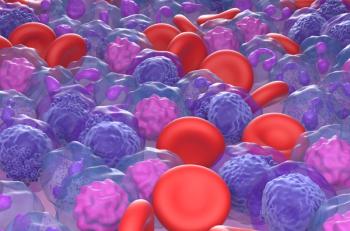
Study Identifies Factors Associated With Hypoglycemia Unawareness, Improvement
The use of continuous glucose monitoring and attendance at a diabetes education appointment appeared to increase the odds of patient improvement.
A new report could help identify patients with type 1 diabetes who are at risk of hypoglycemia unawareness (HU), but the study also shows that such unawareness is reversible.
The report,
The authors explained that only about half of adults aged 30 to 50 years in the United States and Europe meet their hemoglobin A1c (HbA1c) targets. One significant reason for that failure, the authors said, is hypoglycemia.
Patients who cannot recognize early warning signs of hypoglycemia are deemed to have HU, the authors said.
“In patients with HU, the body's response to the increasing levels of counterregulatory hormones is blunted or lost entirely, increasing the risk of severe events,” they noted.
Previous research has suggested that older patients and those with a longer duration of diabetes, a history of recurrent hypoglycemia, and intensive insulin use are more likely to be hypoglycemia unaware. Yet, the authors said previous efforts to curtail HU have not been reliably successful.
Recently, though, the use of CGM has begun to change the paradigm related to HbA1c targets and diabetes treatment and monitoring more generally. The technology can act as an early warning system to alert patients who might be trending toward hypoglycemia. It can also be aided by the use of automated insulin delivery.
“However, it is important to assess whether such interventions are associated with improvement in hypoglycemia awareness in actual clinical practice,” the authors said.
The investigators looked at a data set of 300 individuals with type 1 diabetes who had completed HU surveys between 6 and 12 months apart. HU is measured using Clarke scores. A score of 4 or more indicates that a patient is hypoglycemia unaware.
The authors found that among the 300 patients—who had a median diabetes duration of 19 years—47 patients met the criteria for HU at baseline.
After adjusting for confounding variables, Dungan and colleagues found that gender (male: odds ratio [OR], 0.33; 95% CI, 0.15-0.74), log diabetes duration (OR, 6.40; 95% CI, 2.84-14.5), and eGFR less than 60 mL/min/1.73 m2 (OR, 5.56; 95% CI, 1.98-15.6) were all predictive of HU at baseline.
However, the authors found many patients improved their Clarke scores between the first and second surveys. Ninety-one patients improved their Clarke scores by at least 1 point, and 21 patients improved by 2 points.
“[CGM] use (OR, 2.04; 95% CI, 1.20-3.48) and log diabetes duration (OR, 1.78; 95% CI, 1.22-2.60) were independent predictors of 1-point improvement and eGFR [less than] 60 mL/min/1.73 m2 (OR, 10.5; 95% CI, 3.64-30.0) and an education visit (OR, 2.64; 95% CI, 1.01-6.89) were independent predictors of 2-point improvement in Clarke score,” the investigators reported.
The authors noted that about half of the patients in the study who had HU at baseline went on to experience a severe hypoglycemic episode. They said it is important, therefore, to understand which patients have the highest risk of HU. But they said the study also provides hope, because it shows that many patients improve.
“This finding is critical as it implies that HU is modifiable over time, and nearly half of patients with HU at baseline were classified as aware or indeterminate during follow‐up,” they concluded.
Reference
Melnychuk J, Wyne K, Dungan K. Predictors of change in hypoglycemia unawareness among patients with type 1 diabetes. Diabetes Metab Res Rev. 2022;38(8):e3582. doi:10.1002/dmrr.3582
Newsletter
Stay ahead of policy, cost, and value—subscribe to AJMC for expert insights at the intersection of clinical care and health economics.













































